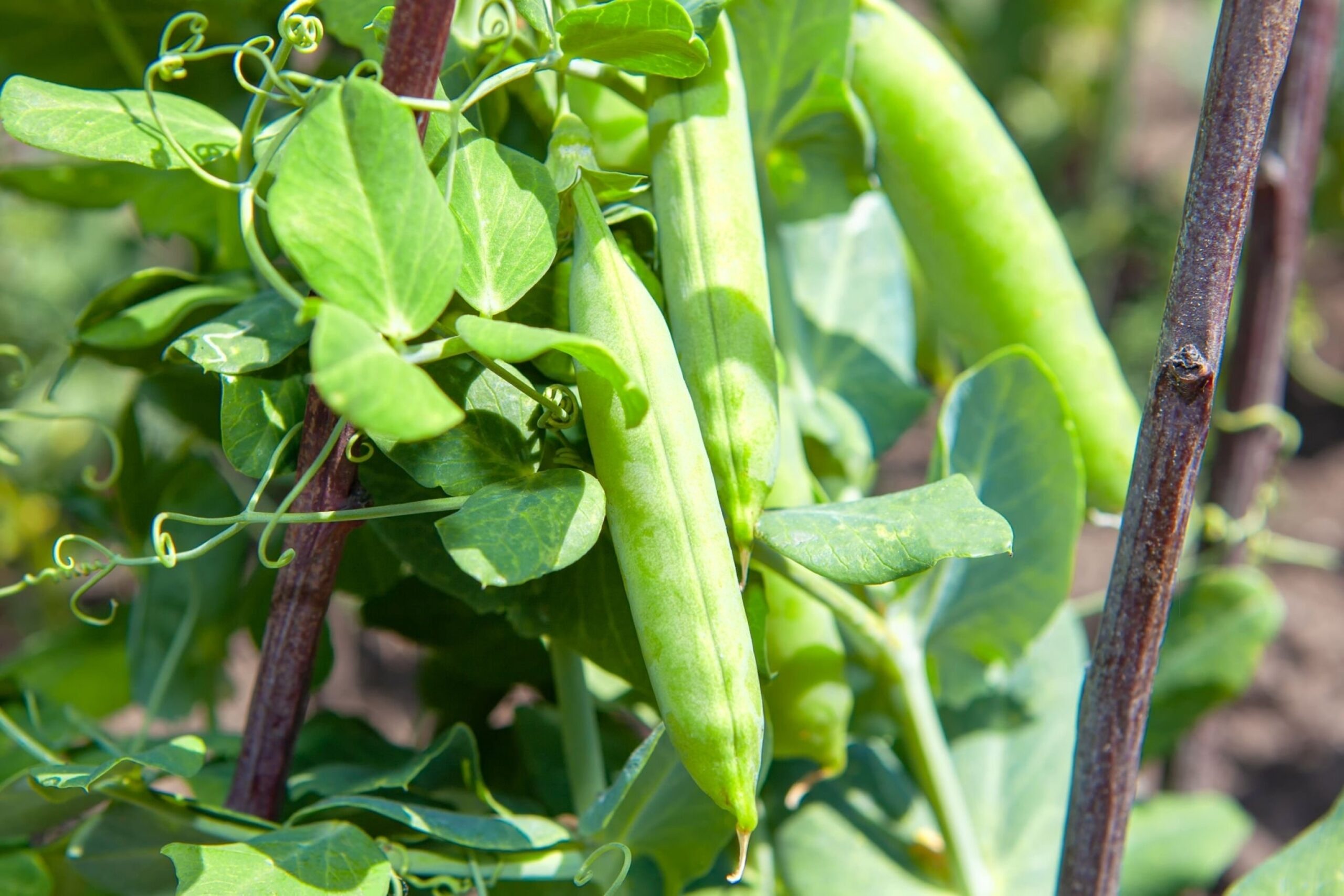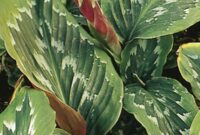Why Navy Beans?
Navy beans, scientifically known as Phaseolus vulgaris, are a type of white bean that has gained popularity for its simplicity in cultivation and versatility in the kitchen.
They are small, oval-shaped beans with a mild, nutty flavor, making them a favorite in various dishes, from soups and stews to salads and dips.
But what sets navy beans apart, especially for beginners, is their adaptability to a wide range of growing conditions and their relatively low maintenance requirements. Whether you have a spacious backyard garden or a few pots on a sunny balcony, navy beans can thrive with minimal fuss.
What to Expect in This Guide
In this beginner’s guide, we will walk you through the essential steps of growing navy beans successfully. Here’s a glimpse of what you can expect to learn:
- Getting Started with Navy Beans: We’ll start by discussing the characteristics and benefits of navy beans, helping you understand why they’re an excellent choice for your garden.
- Preparing Your Garden: Next, we’ll guide you on selecting the right location and preparing the soil for your navy bean plants. Soil quality plays a vital role in their growth.
- Planting Navy Beans: You’ll learn the exact steps for planting navy beans, including spacing, depth, and timing, ensuring you get the best results.
- Caring for Your Navy Bean Plants: Maintaining healthy navy bean plants involves proper watering, fertilization, and protection from common pests and diseases. We’ll cover it all.
- Harvesting and Storing Navy Beans: Finally, we’ll teach you how to tell when your navy beans are ready for harvest and how to store them to enjoy their goodness for months to come.
Getting Started with Navy Beans
Navy beans, also known as Phaseolus vulgaris, are a fantastic addition to any garden, especially if you’re just starting out with gardening.
Characteristics and Benefits of Navy Beans
- Navy beans are small, oval-shaped, and typically creamy white, which gives them their distinct appearance. They are also known as haricot beans or pea beans.
- One of the key benefits of navy beans is their versatility in the kitchen. They have a mild, slightly nutty flavor that makes them an excellent ingredient in a wide range of dishes.
- Navy beans are an excellent source of nutrition. They are packed with fiber, protein, and essential vitamins and minerals, making them a healthy addition to your diet.
Ideal Climate and Growing Conditions
Navy beans thrive in specific climate and growing conditions, making them an ideal choice for many gardeners:
- Climate: Navy beans prefer a warm and temperate climate with well-defined seasons. They thrive in regions with temperatures between 75°F to 85°F (24°C to 29°C) during the growing season.
- Sunlight: These beans love full sun exposure. Aim for at least 6-8 hours of direct sunlight per day for optimal growth.
- Soil: Navy beans are not too demanding when it comes to soil type. They grow well in well-draining soil with a pH level between 6.0 and 7.0. Good drainage is essential to prevent waterlogged roots.
- Frost Sensitivity: It’s crucial to note that navy beans are sensitive to frost. Plant them after the last frost date in your region to avoid any damage to the young plants.
Why Navy Beans Are Popular for Home Gardens
So, what makes navy beans so popular among home gardeners? Here are some compelling reasons:
- Ease of Growing: Navy beans are relatively easy to grow, making them an excellent choice for beginners. Their low-maintenance nature means you can enjoy a bountiful harvest with minimal effort.
- High Nutritional Value: Navy beans are a nutritional powerhouse, offering a healthy source of protein, fiber, and essential nutrients. Growing them at home ensures you have access to fresh, nutrient-rich beans.
- Diverse Culinary Uses: From soups and stews to salads and dips, navy beans are incredibly versatile in the kitchen. Growing your own beans allows you to experiment with various recipes and enjoy delicious, homemade dishes.
- Cost-Efficient: Growing navy beans at home can be a cost-effective way to enjoy this nutritious legume regularly. You’ll save money on grocery store purchases while reaping the rewards of your gardening efforts.
Now that you understand the characteristics, benefits, and ideal growing conditions of navy beans, you’re well-equipped to embark on your navy bean-growing journey.
Preparing Your Garden
Before you get your hands in the soil and start planting navy beans, it’s crucial to prepare your garden properly.
Selecting the Right Location
Choosing the right location for planting navy beans is essential for their success. Here’s what to consider:
- Sunlight: Navy beans thrive in full sun, so select a spot in your garden that receives at least 6-8 hours of direct sunlight per day. Insufficient sunlight can lead to poor growth and lower yields.
- Spacing: Navy beans require some space between plants to grow and spread properly. Ensure there’s enough space in your selected area to accommodate the number of plants you plan to grow.
- Companion Planting: Consider companion planting with other vegetables like corn or carrots, which can provide mutual benefits. For example, corn can provide natural support for your bean plants.
Soil Preparation and Drainage
Preparing the soil is a crucial step in growing healthy navy bean plants. Here’s what you need to know:
- Well-Draining Soil: Navy beans dislike waterlogged roots. Ensure your soil has good drainage to prevent standing water, which can lead to root rot. Raised beds can be an excellent option if your soil doesn’t naturally drain well.
- Soil pH: Aim for a slightly acidic to neutral soil pH, ideally between 6.0 and 7.0. You can test your soil’s pH using a simple soil testing kit available at garden centers.
- Organic Matter: Incorporating organic matter, such as compost or well-rotted manure, into the soil can improve its fertility and moisture retention capacity. This provides the necessary nutrients for your navy bean plants.
Soil Testing and Amendment
If you’re uncertain about your soil’s pH or nutrient levels, consider soil testing:
- Soil Testing: Collect a soil sample from your chosen planting area and send it to a local agricultural extension office or use a soil testing kit. The results will indicate the pH level and nutrient content of your soil.
- Amendment: Depending on the results, you may need to amend your soil. For instance, if the soil is too acidic (below pH 6.0), you can add lime to raise the pH. Conversely, if it’s too alkaline, you can use sulfur to lower the pH. Nutrient deficiencies can also be addressed with specific fertilizers or organic amendments.
By taking the time to select the right location, prepare your soil adequately, and make necessary amendments based on soil testing results, you’ll provide an ideal foundation for your navy bean plants to thrive.
Planting Navy Beans
Now that you’ve prepared your garden and soil, it’s time to get your hands dirty and plant your navy beans. In this section, we will detail the essential steps for planting navy beans, covering spacing, depth, and timing.
We’ll also discuss planting options, whether you’re using rows or raised beds.
Step-by-Step Guide for Planting Navy Beans
- Spacing: Navy beans need adequate spacing to grow and produce well. Plant them about 2 inches (5 cm) apart in rows. Leave approximately 18 inches (45 cm) of space between rows to allow for easy access, weeding, and airflow.
- Depth: Plant your navy beans at a depth of approximately 1 to 1.5 inches (2.5 to 3.8 cm). You can do this by making a small trench in the soil using a hoe or a garden trowel. Drop the beans into the trench, spacing them as recommended, and cover them with soil. Firmly press the soil down to ensure good seed-to-soil contact.
- Watering: After planting, give your navy beans a good soak. Ensure the soil is evenly moist but not waterlogged. Watering immediately after planting helps the seeds establish contact with the soil, promoting germination.
Best Time to Plant Navy Beans in Your Region
The ideal time to plant navy beans can vary depending on your region and local climate. Here are some general guidelines:
- Spring Planting: In regions with mild winters and early springs, you can plant navy beans as soon as the danger of frost has passed, typically in early spring. Soil temperature should be at least 50°F (10°C) for successful germination.
- Summer Planting: In cooler climates, where spring is shorter and temperatures are slow to warm up, consider planting navy beans in late spring or early summer when the soil has warmed up adequately.
- Fall Planting: In some regions with long growing seasons, you can also plant a second crop of navy beans in late summer for a fall harvest. Check the average first frost date in your area to plan accordingly.
Planting Options: Rows vs. Raised Beds
You have two primary options for planting navy beans: in rows or in raised beds. Here’s a brief overview of both:
- Planting in Rows: Planting in rows is a traditional method and works well for larger gardens. Rows make it easy to space and manage your navy bean plants. Remember to leave sufficient space between rows, as mentioned earlier.
- Planting in Raised Beds: Raised beds can be an excellent choice if you have limited space or poor soil drainage. They offer better control over soil quality and moisture. When using raised beds, create mounds or rows within the bed to plant your navy beans, following the spacing and depth guidelines mentioned earlier.
By following these planting guidelines and considering the best timing for your region, you’ll set the stage for healthy navy bean plants that are well-prepared for a bountiful growing season.
Caring for Your Navy Bean Plants
Congratulations on successfully planting your navy beans! Now, it’s time to ensure their healthy growth and protect them from potential threats.
Proper Watering and Fertilization
- Watering: Navy beans require consistent moisture but not waterlogging. Here’s how to water them properly:
- Water deeply but infrequently, aiming to keep the soil consistently moist, especially during the flowering and pod-setting stages.
- Use a soaker hose or drip irrigation system to water at the base of the plants, avoiding wetting the foliage, which can promote disease.
- Mulch around your navy bean plants to help retain soil moisture and suppress weeds. This is particularly important in warm climates to keep the soil cooler.
- Fertilization: Navy beans are moderate feeders. Here are some tips for fertilizing them:
- Start by incorporating organic matter into the soil during the initial soil preparation phase. This provides essential nutrients.
- If necessary, you can apply a balanced, all-purpose fertilizer when planting, following the manufacturer’s instructions.
- Avoid excessive nitrogen fertilizers, as they can lead to lush foliage at the expense of bean production.
Pests and Diseases
Navy beans can be susceptible to certain pests and diseases. Here’s what to watch out for and how to prevent or address them:
- Aphids: These small, sap-sucking insects can damage your bean plants. Use a strong stream of water to dislodge them, or apply insecticidal soap if the infestation is severe.
- Bean Leaf Beetles: These pests feed on bean foliage and can be particularly damaging to young plants. Use row covers or insecticidal sprays as a preventative measure.
- Common Bean Diseases: Diseases like rust, blight, and mosaic virus can affect navy beans. Practice good garden hygiene by removing and disposing of infected plants, and consider using disease-resistant bean varieties.
Providing Support for Growing Navy Bean Plants
Navy beans are bushy plants, but they may benefit from some support, especially if you’re growing pole varieties. Here’s how to provide support:
- Pole Beans: Install trellises, stakes, or a bean teepee to support pole bean varieties. This helps keep the plants off the ground, improves air circulation, and makes harvesting easier.
- Bush Beans: While bush beans typically don’t require support, you can still provide short stakes or small cages to help keep the plants upright and prevent sprawling.
Harvesting and Storing Navy Beans
You’ve cared for your navy bean plants diligently, and now it’s time to reap the rewards of your efforts.
Determining When Navy Beans Are Ready for Harvest
One of the keys to harvesting navy beans at their peak flavor and texture is knowing when they are ready. Here’s how to determine the perfect harvest time:
- Pod Appearance: Monitor the pods closely as they mature. Navy bean pods should be plump, well-filled, and slightly yellow or beige in color. The pods will also start to dry and turn brittle.
- Seed Development: Check a few pods for seed development. When the seeds inside the pods are fully formed and firm to the touch, it’s a good indication that the beans are ready for harvest.
- Timing: Navy beans are typically ready for harvest about 80-90 days after planting, but this can vary depending on your specific bean variety and growing conditions. Refer to the seed packet or plant label for estimated harvest dates.
Harvesting Navy Beans and Drying for Storage
Once you’ve determined that your navy beans are ready for harvest, follow these steps to gather and prepare them for storage:
- Harvesting: To harvest navy beans, simply pull the entire bean plant out of the ground carefully. If you have multiple plants close together, it’s easier to do this in sections. Be gentle to avoid damaging the pods.
- Pod Removal: Remove the pods from the plants by hand or using a gentle shaking motion. Lay the harvested pods in a single layer on a clean, dry surface.
- Drying: Allow the pods to air dry in a well-ventilated area for about 1-2 weeks. This drying period is crucial to reduce moisture content and prevent mold during storage.
- Pod Shelling: After the pods have dried, shell the beans from the pods. You can do this by gently squeezing the pods, and the beans should pop out easily. Discard any damaged or discolored beans.
Tips on Storing Navy Beans to Maintain Freshness
To keep your navy beans fresh for an extended period, follow these storage tips:
- Container: Store dried navy beans in an airtight container or vacuum-sealed bag to prevent moisture and pests from getting in.
- Cool and Dry: Store the container in a cool, dry, and dark place, such as a pantry or cellar. Avoid storing beans in direct sunlight or a humid environment.
- Labeling: Label your storage container with the date of harvest to keep track of freshness.
- Use Within a Year: Navy beans can stay good for up to a year when stored properly. After that, they may lose some flavor and take longer to cook.
By following these steps for harvesting and storing your navy beans, you’ll be able to enjoy their goodness in various recipes throughout the year.
Whether you use them in soups, salads, or casseroles, your homegrown navy beans will add a delicious and nutritious touch to your meals.
Conclusion
Congratulations on completing “A Beginner’s Guide to Growing Navy Beans in Your Garden.” We’ve covered a lot of ground in this comprehensive guide, from the characteristics and benefits of navy beans to the steps for successful cultivation, care, and harvesting.
As we wrap up, let’s summarize the key points, encourage beginner gardeners to embark on their navy bean-growing journey, and offer a final thought for success.
Summary of Key Points
In this guide, we’ve learned:
- The characteristics and benefits of navy beans, making them an excellent choice for beginner gardeners.
- How to select the right location and prepare your garden for navy bean planting.
- The step-by-step process for planting navy beans, including spacing and depth.
- The best time to plant navy beans in your region and options for rows or raised beds.
- How to care for navy bean plants by providing proper watering, fertilization, and support.
- Tips for identifying and addressing common pests and diseases.
- The process of harvesting and storing navy beans for long-lasting freshness.
Encouragement for Beginner Gardeners
To all the beginner gardeners out there, we encourage you to give navy beans a try in your garden. Here’s why:
- Navy beans are one of the easiest and most rewarding crops to grow, making them an ideal choice for those new to gardening.
- They offer a delicious and nutritious addition to your meals, adding versatility to your culinary creations.
- Growing navy beans can be a cost-effective way to enjoy fresh, homegrown produce and connect with the joys of gardening.
Final Thought for Success
As you embark on your navy bean-growing adventure, remember this final tip for success: Patience pays off. Gardening is a journey that teaches us the value of patience and resilience.
Navy beans, like all plants, need time to grow, flourish, and provide you with a bountiful harvest. So, don’t be discouraged by any setbacks or challenges you may encounter along the way.
With dedication and a little green-thumb magic, you’ll be enjoying the fruits of your labor in no time.
Thank you for joining us on this journey of cultivating navy beans in your garden. We hope this guide has equipped you with the knowledge and confidence to nurture your own thriving navy bean plants.
Happy gardening, and may your future harvests be abundant and delicious!



